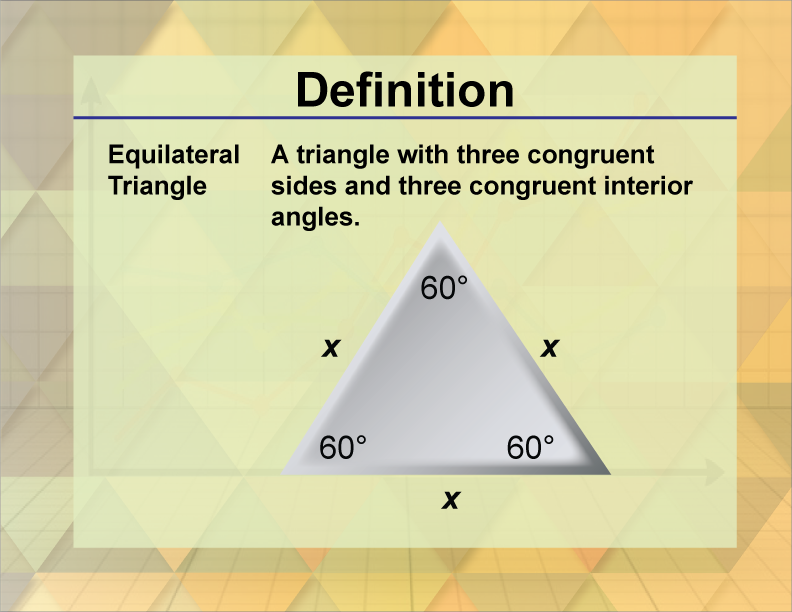
Display Title
Definition--Triangle Concepts--Equilateral Triangle
Display Title
Equilateral Triangle

Topic
Triangles
Definition
An equilateral triangle is a triangle with all three sides of equal length and all three angles equal to 60 degrees.
Description
An equilateral triangle is a special type of triangle where all three sides are of equal length, and all three interior angles are equal to 60 degrees. This symmetry makes equilateral triangles unique and significant in various geometric constructions.
In real-world applications, equilateral triangles are used in design and architecture to create balanced and aesthetically pleasing structures. For example, the equilateral triangle is a fundamental shape in the construction of geodesic domes, which are known for their strength and stability.
In math education, understanding equilateral triangles helps students grasp the broader concepts of symmetry and geometric properties. It also provides a foundation for more advanced topics, such as trigonometry and coordinate geometry. By mastering this concept, students can apply their knowledge to solve practical problems and develop a deeper understanding of geometric principles.
For a complete collection of terms related to functions and relations click on this link: Triangles Collection
| Common Core Standards | CCSS.MATH.CONTENT.4.G.A.1, CCSS.MATH.CONTENT.7.G.A.2, CCSS.MATH.CONTENT.4.G.A.2 |
|---|---|
| Grade Range | 4 - 8 |
| Curriculum Nodes |
Geometry • Triangles • Definition of a Triangle |
| Copyright Year | 2013 |
| Keywords | triangle, defnitions, glossary |